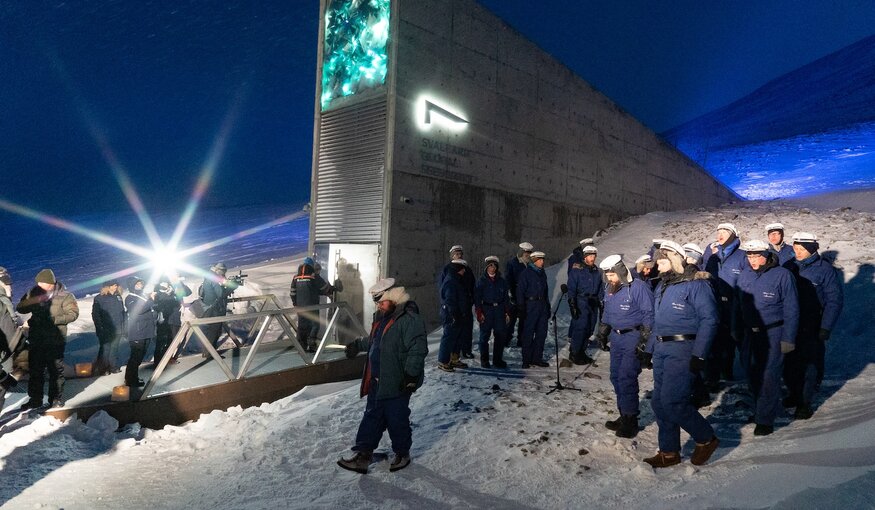Pandemics Aren't Limited to People

25 May 2020
How the world's most famous seed vault defends plants against their next big outbreak
Simran Sethi | The Counter
Banner photo: NordGen
In March, plant physiologist Stephanie Greene zipped herself into a padded snowsuit made to withstand sub-zero temperatures and trudged from a shuttle van parked at the bottom of an icy hill to the Svalbard Global Seed Vault—a small, secure site chiseled into rock and buried under permafrost about 650 miles from the North Pole. Outside the entrance, in the blistering cold, she stood shoulder-to-shoulder with a group of other conservationists from a range of home nations—from Morocco and Romania to the Philippines and Zambia—to make a historic deposit of diverse seeds: some of which are central to our diet, others that rare, all of which are precious. These offerings would join the facility’s “library of life,” a collection now topping over 1 million seeds from 85 different global seed collections, intended to secure our future food supply.
“To be surrounded by colleagues from all over the world who understand the importance of securing our genetic resources,” Greene said, “was a highlight of my life.”
Since the dawn of agriculture, humans have saved seeds, roots, and other kinds of genetic material, modifying them in attempts to make the foods we consume more prolific, resilient, and delicious. Over centuries, these efforts have gotten more sophisticated, but a single theme endures: Having access to a broad range of genetic traits allows us to meet the challenges we face in growing and raising food. Scientists, farmers, and food companies rely on genetic diversity to breed new varieties that increase yields, make crops more nutritious or climate-tolerant, and mitigate the pests and diseases that ravage plant and animal populations—the sudden, devastating outbreaks that are not dissimilar from our current human pandemic.
Read the full story
Categories: Svalbard Global Seed Vault, Maize
